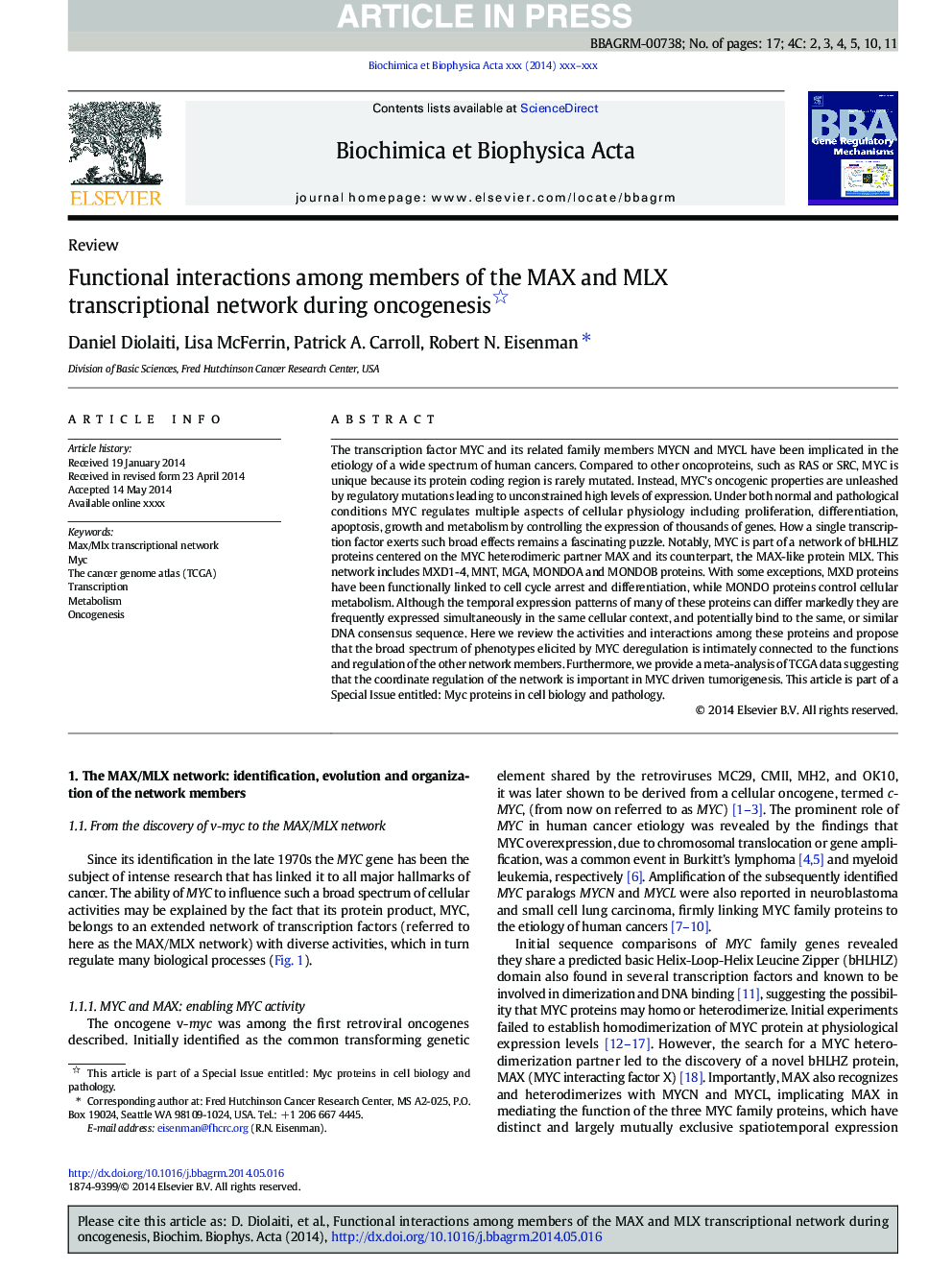| Article ID | Journal | Published Year | Pages | File Type |
|---|---|---|---|---|
| 10798988 | Biochimica et Biophysica Acta (BBA) - Gene Regulatory Mechanisms | 2015 | 17 Pages |
Abstract
The transcription factor MYC and its related family members MYCN and MYCL have been implicated in the etiology of a wide spectrum of human cancers. Compared to other oncoproteins, such as RAS or SRC, MYC is unique because its protein coding region is rarely mutated. Instead, MYC's oncogenic properties are unleashed by regulatory mutations leading to unconstrained high levels of expression. Under both normal and pathological conditions MYC regulates multiple aspects of cellular physiology including proliferation, differentiation, apoptosis, growth and metabolism by controlling the expression of thousands of genes. How a single transcription factor exerts such broad effects remains a fascinating puzzle. Notably, MYC is part of a network of bHLHLZ proteins centered on the MYC heterodimeric partner MAX and its counterpart, the MAX-like protein MLX. This network includes MXD1-4, MNT, MGA, MONDOA and MONDOB proteins. With some exceptions, MXD proteins have been functionally linked to cell cycle arrest and differentiation, while MONDO proteins control cellular metabolism. Although the temporal expression patterns of many of these proteins can differ markedly they are frequently expressed simultaneously in the same cellular context, and potentially bind to the same, or similar DNA consensus sequence. Here we review the activities and interactions among these proteins and propose that the broad spectrum of phenotypes elicited by MYC deregulation is intimately connected to the functions and regulation of the other network members. Furthermore, we provide a meta-analysis of TCGA data suggesting that the coordinate regulation of the network is important in MYC driven tumorigenesis. This article is part of a Special Issue entitled: Myc proteins in cell biology and pathology.
Related Topics
Life Sciences
Biochemistry, Genetics and Molecular Biology
Biochemistry
Authors
Daniel Diolaiti, Lisa McFerrin, Patrick A. Carroll, Robert N. Eisenman,
